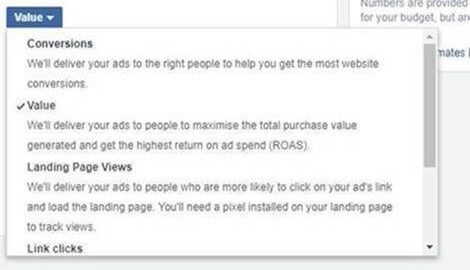Contributor Laura Collins explains how to securely get the most out of Facebook’s trove of user rich data and take advantage of its sophisticated machine learning to improve campaign performance.

If there’s one thing the last few months have taught everyone, it’s that Facebook has a vast amount of data about its users.
Understandably, the recent scandals have cast this revelation in a distinctly negative light — some users feel uncomfortable with their private data being shared. A handful of large brands such as Mozilla and Commerzbank have taken a stand against the platform over security fears.
But amidst all the doom and gloom, we marketers shouldn’t lose sight of the fact that data, when used appropriately and securely, is a gift. It allows us to run campaigns that are both highly effective for advertisers and relevant to users, thereby minimizing the number of annoying or useless ads they’re bombarded with on a daily basis.
But that rich data isn’t solely used for targeting purposes. When running Facebook ad campaigns, you’re presented with a host of automated optimization options which, used correctly, can help you to run more efficient and effective ad campaigns.
Let’s look at some of the ways you can use Facebook’s highly sophisticated machine learning to improve the performance of your campaigns, with proven examples of its success.
Campaign objectives
Having worked in other channels before social, one of the first things I noticed and loved about the Facebook Ads Manager is that it forces you to select an objective for your campaign.
I’ve seen countless examples of search or display campaigns that are trying to be a jack-of-all-trades, and they inevitably end up master of none. “I need this campaign to achieve great reach, a high volume of clicks, and of course a positive return on advertising spending (ROAS).”
Sound familiar?
All too often, advertisers can forget that if you want to achieve multiple objectives, you need multiple campaigns. But Facebook doesn’t let you forget: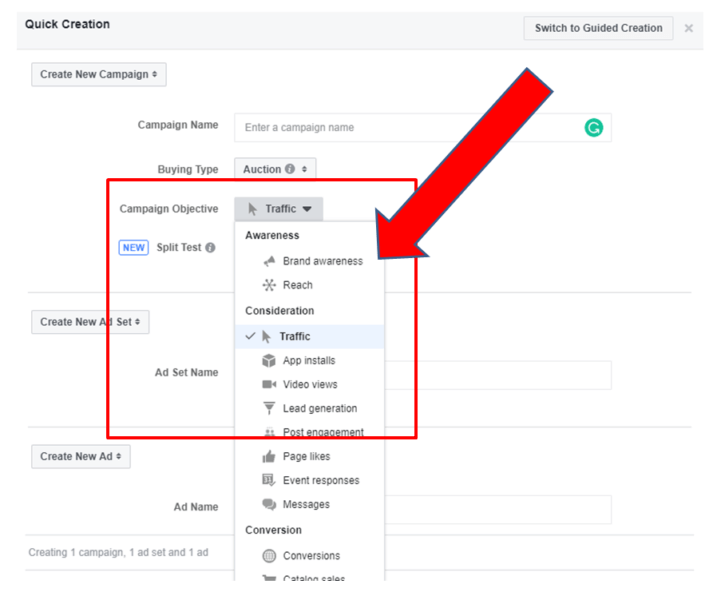
When each new campaign is created, think carefully about what you’re trying to achieve, and select appropriately from the 13 options at your disposal. If you’re trying to achieve two of those objectives, create two campaigns.
That campaign objective isn’t just a vanity attribute. It tells the Facebook algorithm who it should be putting your ads in front of. If you choose Video Views, the algorithm will put your ads in front of users within your target audience that it knows are more likely to complete video views.
At Merkle (my employer) we’ve seen dramatic results from ensuring campaign objectives accurately reflect a client’s needs. We once took over running Facebook activity for a new utilities-sector client and noticed that, despite it being abundantly clear their main objective was account switches, all campaigns were using the Traffic objective.
It’s not possible to change a campaign objective post-launch, so we decided to rebuild from scratch and switch to Conversions. By making that one simple change, the team was able to achieve a 40 percent increase in account switches and stay well below target cost per action (CPA).
Top tip: Users Facebook deems “clicky” tend to be very expensive, and you often find that campaigns with a Traffic objective can have an unexpectedly high cost per click (CPC).
As an alternative, consider using a Conversions objective, but select a custom conversion higher up the funnel than the final purchase or sign-up — e.g., a page view or getting a quote.
That way, you’re not entering the fray with all the other advertisers vying for those clicky users, but the algorithm still has enough data to find people likely to come to your site.
Placements
Gone are the days when Facebook was just Facebook. They now own four of the top 10 most downloaded apps in the world: Facebook, Messenger, Instagram and WhatsApp.
And while they’ve yet to monetize WhatsApp as an ads platform, Messenger and Instagram are available as placements in your Facebook campaigns.
They sit alongside the Facebook Audience Network (FAN) and In-Stream as alternative inventory to be taken advantage of.
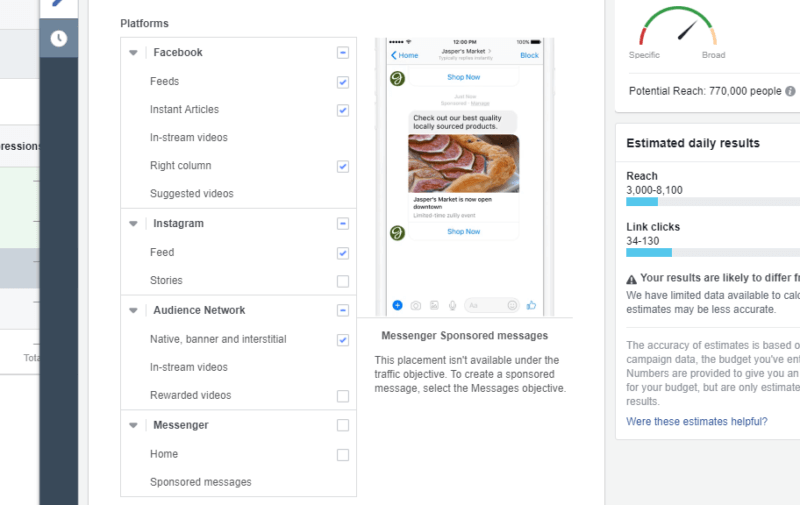
It’s clear why Facebook expanded placements in this way: The more ads they can serve in more places, the more money they can make. But there’s a big advantage for advertisers, too. By selecting all placements by default, Placement Optimization can occur.
This is where the Facebook algorithm can decide where to serve your ad based on where it can achieve the lowest cost per thousand impressions (CPM). For a large entertainment client, we found that using Placement Optimization achieved a CPM 20 percent lower than when just the Facebook newsfeed and right-hand column were manually selected.
Stepping outside of the Facebook newsfeed does carry some risks, though.
FAN, Instant Articles and In-Stream all carry brand safety risks. While Facebook has provided tools to mitigate this risk, such as blocklists and category exclusions, there may be some cases where brand safety is such a concern that a slightly higher CPM will be a small price to pay to just appear on the newsfeed.
We also see varying degrees of success with different placements. Where the FAN can achieve reductions in CPM with some clients, for others we’ve seen it perform poorly and decided to remove it. I would recommend starting any new campaign with all placements selected, and then regularly evaluating performance and adjusting your strategy as needed.
Ad delivery
As well as using campaign objectives to help Facebook decide to whom to serve your ads, at the ad set level, you can go one step further by selecting how you want to “Optimize for ad delivery.”
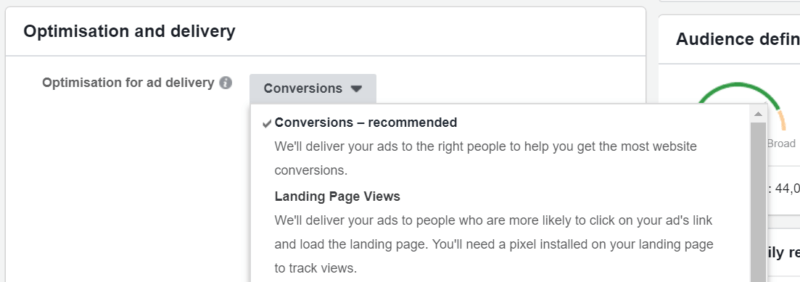
The options at your disposal will depend on the campaign objective you selected and will allow you to further home in on exactly the right users to achieve your goals.
Recently, Value has been added to this drop-down menu where you select a Conversions objective. So, instead of just optimizing your ads toward users who are likely to complete a conversion, Facebook can deliver ads to people it deems likely to make high-value purchases, thereby increasing the ROAS of your campaign.
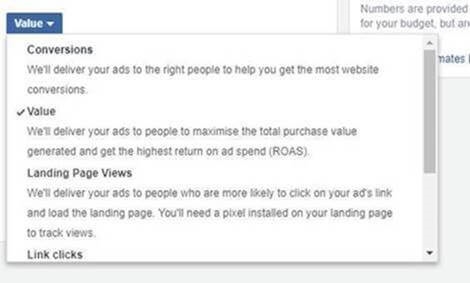
We’ve recently been testing this and have seen some great success. Of a selection of clients testing Value against Conversions, we found that, on average, optimizing toward Value improved ROAS by 110 percent!
However, there was an exception: one large retail client saw that their ROAS was 40 percent lower optimizing towards Value, and we decided to switch back to Conversions.
But all that teaches us is that there are few hard and fast rules when it comes to running Facebook campaigns. Testing is absolutely vital, and Facebook’s split-testing feature allows you to accurately test one optimization option against another to decide which is best for your campaign.
Final thoughts
Machine learning and automation are hot topics in the industry, but as with many hot topics, it can be hard to see whether there’s substance behind the hype. Is it actually useful, or just a buzzword?
Facebook’s combo of groundbreaking ad products and rich user data means that it’s actually worth trusting them to make some decisions. They know a huge amount about the people you’re trying to target, more than you could ever hope to learn with all the market research in the world.
So, test out as many of these options as you can, making sure to remember that what works for one campaign may not work for another and that you should be constantly evaluating performance.
Opinions expressed in this article are those of the guest author and not necessarily Marketing Land. Staff authors are listed here.
Marketing Land – Internet Marketing News, Strategies & Tips
(34)
